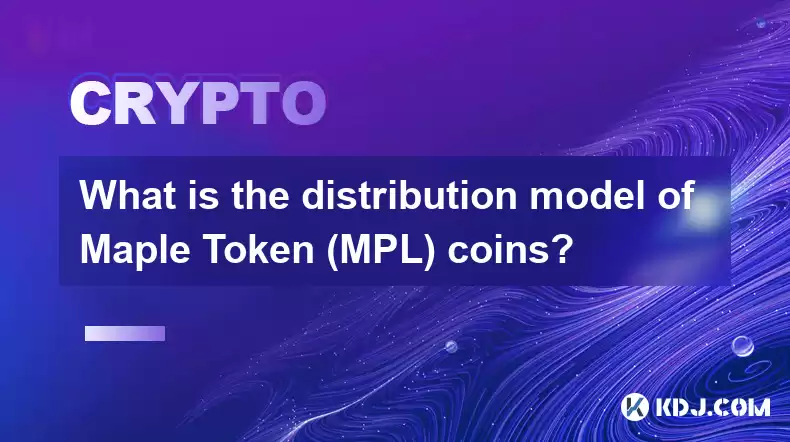-
 Bitcoin
Bitcoin $120100
0.91% -
 Ethereum
Ethereum $4597
8.09% -
 XRP
XRP $3.292
4.12% -
 Tether USDt
Tether USDt $0.9999
-0.01% -
 BNB
BNB $837.7
3.84% -
 Solana
Solana $190.8
8.16% -
 USDC
USDC $0.9998
-0.01% -
 Dogecoin
Dogecoin $0.2365
4.04% -
 TRON
TRON $0.3515
1.90% -
 Cardano
Cardano $0.8502
8.56% -
 Chainlink
Chainlink $23.56
10.38% -
 Hyperliquid
Hyperliquid $44.88
2.69% -
 Stellar
Stellar $0.4538
4.57% -
 Sui
Sui $3.910
5.74% -
 Bitcoin Cash
Bitcoin Cash $624.3
6.95% -
 Hedera
Hedera $0.2626
6.35% -
 Ethena USDe
Ethena USDe $1.001
-0.01% -
 Avalanche
Avalanche $24.81
6.92% -
 Litecoin
Litecoin $129.0
6.38% -
 Toncoin
Toncoin $3.519
3.77% -
 UNUS SED LEO
UNUS SED LEO $9.069
1.07% -
 Shiba Inu
Shiba Inu $0.00001367
4.45% -
 Uniswap
Uniswap $11.55
3.55% -
 Polkadot
Polkadot $4.186
7.13% -
 Ethena
Ethena $0.8169
2.57% -
 Cronos
Cronos $0.1670
0.16% -
 Dai
Dai $0.9999
-0.01% -
 Pepe
Pepe $0.00001223
6.79% -
 Bitget Token
Bitget Token $4.464
1.34% -
 Aave
Aave $317.0
6.94%
What is the distribution model of Maple Token (MPL) coins?
Maple Token (MPL) employs a distribution model that allocates 40% to its ecosystem, fostering stakeholder alignment and incentivizing growth through liquidity provision, staking, and initial distribution through auctions and liquidity pools.
Dec 25, 2024 at 06:25 pm

Key Points:
Understanding Token Distribution
- Tokenomics of distribution models
- Role of key players in token allocation
- Strategies for token distribution
Maple Token (MPL) Distribution Model
- Token supply, allocation, and release schedule
- Initial distribution among stakeholders
- Distribution through liquidity pools and staking
Comparison with Similar Distribution Models
- Similarities and differences to other token models
- Analysis of the effectiveness of different approaches
Impact on Token Value and Market Performance
- Correlation between distribution model and token price
- Factors influencing the demand and supply of tokens
- FAQs on Maple Token Distribution
Maple Token (MPL) Distribution Model
Token Supply and Allocation:
- A total supply of 1 billion MPL tokens
- 40% allocated to the Maple ecosystem, including liquidity providers, stakers, and borrowers
- 20% allocated to the Maple Foundation for development and operations
- 20% allocated to strategic investors
- 10% allocated to the team and early contributors
- 10% allocated to a community reserve
Initial Distribution:
- 500 million tokens (50%) distributed upon launch through a decentralized auction
- 200 million tokens (20%) allocated to liquidity pools on Uniswap and Curve
- 100 million tokens (10%) distributed through a staking program
- 100 million tokens (10%) held in reserve for future ecosystem development
Release Schedule:
- Tokens allocated to the Maple ecosystem will be unlocked gradually over four years, with 25% released each year
- Tokens allocated to the Maple Foundation and strategic investors will vest over three years
- Tokens allocated to the team and early contributors will vest over one year
Liquidity Pools and Staking:
- MPL tokens can be staked to earn rewards
- Tokens can be added to liquidity pools on Uniswap and Curve, allowing users to earn trading fees
Comparison with Similar Distribution Models
- Uniswap: 60% of tokens distributed to the community through liquidity rewards, 20% to the team, 20% to investors
- Curve: 51% of tokens distributed to liquidity providers, 29% to the team, 10% to investors, 10% to early contributors
- Compound: 40% of tokens distributed to users through lending and borrowing, 40% to investors, 20% to the team
Impact on Token Value and Market Performance
- Distribution models can influence the initial price of a token through the release schedule and the number of tokens distributed
- The demand and supply of tokens during the release period can affect the price volatility
- Staking and liquidity pools can create incentives for holding and using the token, which can support its value
FAQs on Maple Token Distribution
What is the purpose of the distribution model?
- To align incentives among stakeholders, encourage ecosystem growth, and ensure a fair and balanced token distribution.
Why are there different token allocations for different groups?
- To reward early contributors, support development, attract strategic partners, and incentivize community participation.
How will the distribution model affect the token price?
- The price is influenced by factors such as supply and demand, market conditions, and the overall adoption of the Maple ecosystem.
What are the benefits of staking MPL tokens?
- Earn rewards, participate in governance, and support the stability of the Maple network.
How can I acquire MPL tokens?
- Participate in the launch auction, purchase tokens on exchanges, or provide liquidity or stake tokens through the Maple Platform.
Disclaimer:info@kdj.com
The information provided is not trading advice. kdj.com does not assume any responsibility for any investments made based on the information provided in this article. Cryptocurrencies are highly volatile and it is highly recommended that you invest with caution after thorough research!
If you believe that the content used on this website infringes your copyright, please contact us immediately (info@kdj.com) and we will delete it promptly.
- Unich's OTC Exchange: Surging with $1.2B Volume – What's the Hype?
- 2025-08-13 02:50:11
- MoonBull's Explosive Moves: Your Crypto Whitelist Ticket to Ride!
- 2025-08-13 02:30:11
- MAGACOIN Finance: Don't Miss the Presale Bonus!
- 2025-08-13 02:30:11
- Trump's Crypto Kingdom: $2.4 Billion and Counting
- 2025-08-13 02:50:11
- Solana, LSTs, and SEC Approval: A New Dawn for Crypto?
- 2025-08-13 02:55:12
- Bitcoin's Profit Surge: Unpacking the BTC Value Boom
- 2025-08-13 02:55:12
Related knowledge

How to purchase Aragon (ANT)?
Aug 09,2025 at 11:56pm
Understanding Aragon (ANT) and Its PurposeAragon (ANT) is a decentralized governance token that powers the Aragon Network, a platform built on the Eth...

Where to trade Band Protocol (BAND)?
Aug 10,2025 at 11:36pm
Understanding the Role of Private Keys in Cryptocurrency WalletsIn the world of cryptocurrency, a private key is one of the most critical components o...

What is the most secure way to buy Ocean Protocol (OCEAN)?
Aug 10,2025 at 01:01pm
Understanding Ocean Protocol (OCEAN) and Its EcosystemOcean Protocol (OCEAN) is a decentralized data exchange platform built on blockchain technology,...

How to invest in Kyber Network Crystal v2 (KNC)?
Aug 12,2025 at 05:21pm
Understanding Kyber Network Crystal v2 (KNC)Kyber Network is a decentralized liquidity hub built on the Ethereum blockchain that enables instant token...

Where can I buy UMA (UMA)?
Aug 07,2025 at 06:42pm
Understanding UMA and Its Role in Decentralized FinanceUMA (Universal Market Access) is an Ethereum-based decentralized finance (DeFi) protocol design...

What exchanges offer Gnosis (GNO)?
Aug 12,2025 at 12:42pm
Overview of Gnosis (GNO) and Its Role in the Crypto EcosystemGnosis (GNO) is a decentralized prediction market platform built on the Ethereum blockcha...

How to purchase Aragon (ANT)?
Aug 09,2025 at 11:56pm
Understanding Aragon (ANT) and Its PurposeAragon (ANT) is a decentralized governance token that powers the Aragon Network, a platform built on the Eth...

Where to trade Band Protocol (BAND)?
Aug 10,2025 at 11:36pm
Understanding the Role of Private Keys in Cryptocurrency WalletsIn the world of cryptocurrency, a private key is one of the most critical components o...

What is the most secure way to buy Ocean Protocol (OCEAN)?
Aug 10,2025 at 01:01pm
Understanding Ocean Protocol (OCEAN) and Its EcosystemOcean Protocol (OCEAN) is a decentralized data exchange platform built on blockchain technology,...

How to invest in Kyber Network Crystal v2 (KNC)?
Aug 12,2025 at 05:21pm
Understanding Kyber Network Crystal v2 (KNC)Kyber Network is a decentralized liquidity hub built on the Ethereum blockchain that enables instant token...

Where can I buy UMA (UMA)?
Aug 07,2025 at 06:42pm
Understanding UMA and Its Role in Decentralized FinanceUMA (Universal Market Access) is an Ethereum-based decentralized finance (DeFi) protocol design...

What exchanges offer Gnosis (GNO)?
Aug 12,2025 at 12:42pm
Overview of Gnosis (GNO) and Its Role in the Crypto EcosystemGnosis (GNO) is a decentralized prediction market platform built on the Ethereum blockcha...
See all articles

























































































